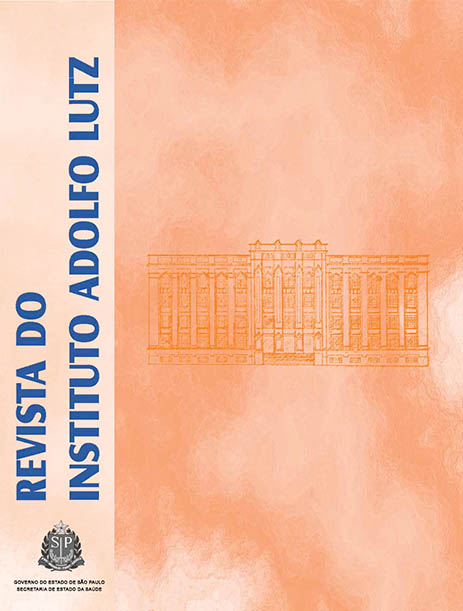Abstract
This study assessed the effect of resistant starch contents increase on blood glucose rate and the influence of freezing procedure, used for increasing these contents, on the acceptability of foods consumed on diet. Meals consisted of rice, beans and pasta containing 4.36%, 2.10% and 2.50% of resistant starch, respectively, were cooked and meals containing 7.25%, 4.77% and 5.45% of resistant starch, respectively, were cooked and stored at –18 °C for sixty days. These meals were assessed on glycemic response and sensory analysis. As for glycemic response, the glucose medium increase occurred at thirty minutes after ingestion, which was higher comparing to ninety minutes for meals consisted of cooked and stored food and thefreshly cooked one; no significant differences were found at the both times evaluated. Among the rice samples no significant difference was found in appearance, smell, texture and flavor; for mass sample, this difference was not found in odor only. As for beans, the difference was detected in the appearance of stored sample. Increasing resistant starch contents due to the freezing process did not reflect on the glycemic response and the foods subjected to freezing and thawing procedure were well accepted after being thawed and heating.
References
1. Lobo AR, Silva GML. Amido resistente e suas propriedades físico-químicas. Rev Nutr. 2003;16(2):219-26.
2. Pereira KD. Amido resistente, a última geração no controle de energia e digestão saudável. Ciênc Tecnol Aliment. 2007;27(supl):88-92.
3. O’dea K et. al. Rate of starch hydrolysis in vitro as a predictor of metabolic responses to complex carbohydrate in vivo. Am J Clin Nutr. 1981;1991-3.
4. Jenkins DJA, Vuksan V, Kendall CWC, Würsch P, Jeffcoat R, Waring S, et al. Physiological effects of resistant starches on fecal bulk, short chain fatty acids, blood lipids and glycemic index. J Am Coll Nutr. 1998;17(6):609-l6.
5. Helbig E. Efeitos do teor de amilose e da parboilização do arroz na formação de amido resistente e nos níveis glicêmico e lipêmico de ratos wistar [tese de doutorado]. Pelotas (RS): Faculdade de Agronomia Eliseu Maciel/Universidade Federal de Pelotas - UFPel; 2007.
6.Hu P. Starch digestibility and the estimated glycemic score of different types of rice differing in amylose contents. J Cereal Sci. 2004;40:231-7.
7. Thompson DB. Strategies for the manufacture of resistant starch. Trends Food Sci Technol. 2000;11:245-53.
8. Tovar J, Melito C, Herrera E, Rascón A, Pérez E. Resistant starch formation does not parallel syneresis tendency in different starch gels. Food Chem. 2002;76:455-9.
9. Della Torre JCM, Rodas MAB, Badolato GG, Tadini CC. Sensory evolution and consumer test of minimally processed orange juice. Ciênc Tecnol Aliment. 2003;23(2):105-11.
10. Walter M, Silva LP, Perdomo DMX. Amido disponível e resistente em alimentos: adaptação do método da AOAC 996.11. Alim Nutr. 2005;16(1):39-43.
11. Gilbert GA, Spragg SP. Iodine Sorption: “Blue Value”. In: Whistler, R.L. et al. Methods in carbohydrate chemistry, v. IV – starch. London: Academic Press; 1964. p. 168-9.
12. Dutcosky SD. Análise sensorial de alimentos. 2ª. ed. Curitiba: Editora Universitária Champagnat;2007.
13. Salgado SM, Faro ZP, Guerra NB, Livera AVS. Aspectos físico-químicos do amido resistente. Bol CEPPA. 2004;23(1):109-22.
14. Caruso L, Menezes EW. Índice glicêmico dos alimentos. Nutrire. 2000;19/20: 49-63.
15. Luz SS, Campos PL, Ribeiro SML, Tirapegui J. Aspecto atual da digestão e absorção de carboidratos. Arq Gastroenterol.1997;34(3):175-85.
16. Englyst KN, Englyst HN, Hudson GJ, Cole TJ, Cummings JH. Rapidly available glucose in foods: an in vitro measurement that reflects the glycemic response. Am J Clin Nutr. 1999;69:448-54.
17. Carreira MC, Lajolo FM, Menezes EW. Glycemic index: effect of food storage under low temperature. Braz Arch Biol Techol. 2004;47(4):569-74
18. Menezes EW, Lajolo F. Métodos in vivo e in vitro para determinar o IG: experiências em alimentos brasileiros. In: Seminário “Índice glicémico en salud y alimentación humana”. Inciensa: Costa Rica, set. 2002.
19. Raben A, Tagliabue A, Christensen NJ, Madson NJ, Holst JJ, Astrup A. Resistant Starch: the effect on postprandial glycemia, hormonal response and satiety. Am J Clin Nutr.1994;60:544-51.
20. Hoover R, Zhou Y. In vitro and in vivo hydrolysis of legume starches by alpha-amylase and resistant starch formation in legumes - a review. Carbohydr Polym. 2003;54:401-17.
21. Berry CS. Resistant starch: formation and measurement of starch that survives exhaustive digestion with amylolytic enzymes during the determination of dietary fibre. J Cereal Sci. 1986;4:301-14.
22. Eggum BO, Juliano BO, Perez CM, Acedo EF. The resistant starch, undigestible energy and undigestible protein contents of raw and cooked milled rice. J Cereal Sci. 1993;18(2):159-70.
23. Goñi I, Garcia-Diz EM, Saura-Calixto F. Analysis of resistant starch: a method for foods and food products. Food Chem. 1996;56:445-9.
24. Helbig E, Dias ARG, Tavares RA, Schirmer MA, Elias MC. Arroz parboilizado efeito na glicemia de ratos wistar. Arch Latinoam Nutr. 2008;58(2);149-55.
25. Dernardin CC, Walter M, Silva LP, Souto GD, Bertoncello GS, Fagundes CAA. Efeito dos teores de amilose de cultivares de arroz no metabolismo glicêmico em ratos. IV CBAI, Santa Maria; 2005.
26. Truswell AS. Glycemic index of foods. Eur J Clin Nutr.1992;46:91-101.
27. Pimentel NLM. Biscoito de polvilho suplementado com amido resistente: um novo alimento funcional [dissertação de mestrado]. Londrina (PR): Universidade Estadual de Londrina; 2007.
28. Aparício SA et al. Slowly digestible cookies prepared from resistant starch-rich lintnerized banana starch. J Food Comp Anal. 2007;20(3-4):175-81.
29. Sajilata MG, Singhal RS, Kulkami PR. Resistant starch - a review. Inst Food Technol. 2006;5:1-17.
30. Lima NL, Emanuelle C, Silva CL, Diniz MC, Oliveira MRT, Gadelha TS. Efeito sobre a conservação de quatro variedades de feijão macassar verde (Vigna unguiculata L. WALP.): submetidos a temperaturas de refrigeração e congelamento. Rev Bras Prod Agroindustr. 2000;2(2):57-69.

This work is licensed under a Creative Commons Attribution 4.0 International License.
Copyright (c) 2011 Instituto Adolfo Lutz Journal
